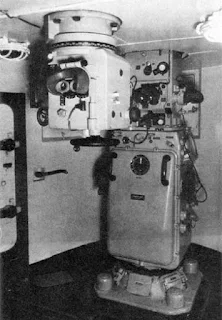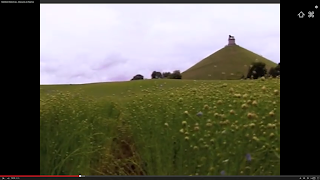In the original article this
author indicated that at the time he had been unable to find detailed
particulars regarding KMS Bismarck’s weapons, i.e. gunnery, fire control system.
As a substitute land-based analog gunnery “predictors”, both German and
British, as well as the US Navy’s Mk IA Fire Control Computer were shown. For the reader's convenience, and as cross-reference that site is; http://arnhemjim.blogspot.com/2013/10/david-versus-goliath-fairey-swordfish.html
Apologies are in order, as the information was right at hand in a resource which was even cited in the original document. Interested and sharp readers may well have discovered the data if they explored the referenced source material in any depth. Look under Internal View in; http://www.bismarck-class.dk/bismarck/bismarck_menu.html .
Apologies are in order, as the information was right at hand in a resource which was even cited in the original document. Interested and sharp readers may well have discovered the data if they explored the referenced source material in any depth. Look under Internal View in; http://www.bismarck-class.dk/bismarck/bismarck_menu.html .
With full acknowledgment and expressed gratitude to that site the following are a series of photographs taken in Bismarck’s Command and Calculation Headquarter (sic) (Radar Navigation and Evaluation Room), and of a calculator, i.e. analog computer, in the Fire Control Room.
In addition I’ve
subsequently been able to find an excellent Internet site which discusses Naval
Gunnery in the Royal Navy during World War II, in some detail, specifically
including the system installed in HMS Hood. For those who may be interested see;
http://www.godfreydykes.info/royal%20naval%20gunnery%20in%20WW2.htm . From another web site here is a photograph of a typical WWII Royal Navy fire control computer in a heavy combatant (battleship, battle cruiser, heavy cruiser, exact ship unknown) of that era, erroneously labelled a "transmitting station" possibly for security reasons? It suffices that HMS Hood's fire control computer was not nearly this modern.
http://www.godfreydykes.info/royal%20naval%20gunnery%20in%20WW2.htm . From another web site here is a photograph of a typical WWII Royal Navy fire control computer in a heavy combatant (battleship, battle cruiser, heavy cruiser, exact ship unknown) of that era, erroneously labelled a "transmitting station" possibly for security reasons? It suffices that HMS Hood's fire control computer was not nearly this modern.
In order to give the reader just a brief
perspective on how far the weapon systems technology has evolved from the
analog gear teeth and vacuum tubes of those days, I thought a brief look at
what is available as unclassified information on the US Navy Mk-99 Fire Control
System (FCS) might prove interesting. The Mk-99 FCS is one of the principal digital “brain
lobes”, and as such the major surface-to-air missile component of the AEGIS
Combat System. Integrated with other digital weapon control systems, it
provides for a simultaneous mufti-warfare/multiple target engagement
capability. It has evolved into a distributed, open architecture system, capable
of expansion to accommodate emerging technology as well as future emerging threat packages.
Following are block diagram charts depicting the AEGIS Weapon System, Mk-99 FCS, and photographs of a portion of the wide screen displays and control panels comprising the modern Combat Information Center of three Aegis Class cruisers. The imagery is of early system displays and controls, circa 1997-1998, in the USS Vincennes (CG-49), USS Normandy (CG-60), and USS John S. McCain (DDG-56). Newer configurations are obviously classified.
























